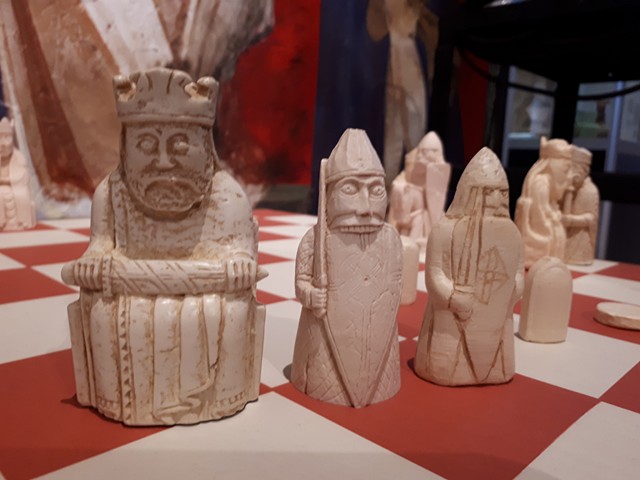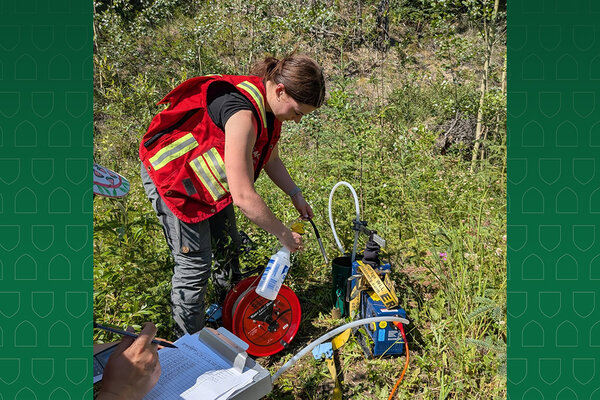
Museum of Antiquities prints 3D replicas of artifacts
Computer science student creates Lewis Chessman pieces
By Shannon Boklaschuk
It’s a great example of what can happen when art meets science.
The University of Saskatchewan’s Museum of Antiquities is creating replicas using a 3D printer, enabling visitors to get an in-person look at copies of ancient artifacts.
Elyse Jensen, a third-year computer science student in the College of Arts & Science, is a museum employee who has printed numerous pieces, including a replica of the Roman bronze known as the Dancing Faun. The original faun was unearthed in Pompeii in 1830 from the renowned House of the Faun and is currently located in Naples.

Jensen said the Dancing Faun replica took 90 hours to print. It was created in pieces from biodegradable corn plastic, she said, noting it “smells like popcorn” in the museum during the printing process.
The amount of time it takes to print a replica depends on the size of the piece and the detail within it, she said.
“It’s pretty much like a giant hot glue gun,” Jensen said of the 3D printer.
On April 24, Jensen was printing replicas of the famed Lewis Chessmen, which were originally found on a beach on the Isle of Lewis in Scotland in 1831. The pieces, which were carved from walrus ivory and whale tooth, were likely made in Norway between 1150 and 1200.
The Museum of Antiquities already had Lewis Chessmen replicas in its collection from the British Museum and the National Museum of Scotland, but a few pieces were missing. Jensen wanted to complete the set.
“Wouldn’t it be cool if we could 3D print the missing ones?” she thought.
Replicas at the Museum of Antiquities are printed using open source files or with permission from the museum that holds the original piece.
The Lewis Chessmen pieces took considerably less time to print than the Dancing Faun, Jensen said—just one to four hours. The pieces were to be finished by a studio art student who adds further details to the museum’s replicas and who, along with volunteers, paints the items.
For Jensen, the best part of the 3D printing process is periodically checking in on the progression of the replicas and watching them take shape.
“I think it’s really cool to put the printer on and then leave and come back,” she said.


